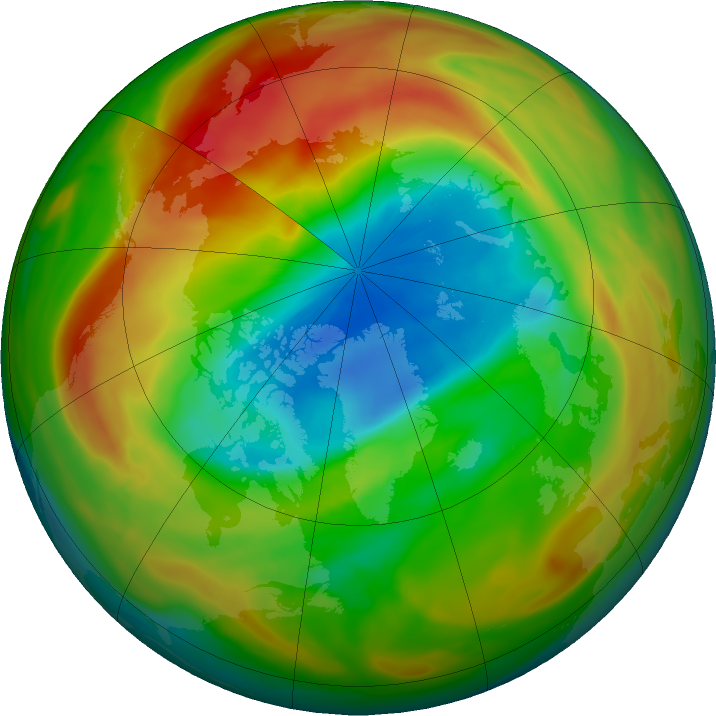A rare and very large area of severely depleted ozone (03) opened up in the stratosphere above the Arctic Circle in March 2020. Scientists attribute this ozone hole to the persistence of a very strong polar vortex (a jet stream that circles the pole) into the Northern Hemisphere spring. The polar vortex kept stratospheric temperatures unusually cold throughout March, thereby allowing for the destruction of ozone as the Sun returned to the northern polar region and activated ozone-depleting chlorine- and bromine-containing compounds. See also: Arctic Circle; Chlorine; Bromine; Jet stream; Ozone; Stratosphere; Stratospheric ozone

Stratospheric ozone protects life on Earth from harmful ultraviolet (UV) radiation from the Sun. This atmospheric molecule absorbs all of the Sun’s UV rays of less than 290 nm, which can damage DNA, and much of the UVB rays of 290–320 nm, which can cause sunburn, cataracts, and skin cancer, as well as harm plant and animal life. However, the Arctic ozone hole is not expected to become a health hazard, because the hole should start shrinking in a few weeks as the northern stratosphere warms and atmospheric ozone formation resumes. See also: Deoxyribonucleic acid (DNA); Sun; Ultraviolet radiation; Ultraviolet radiation (biology)





